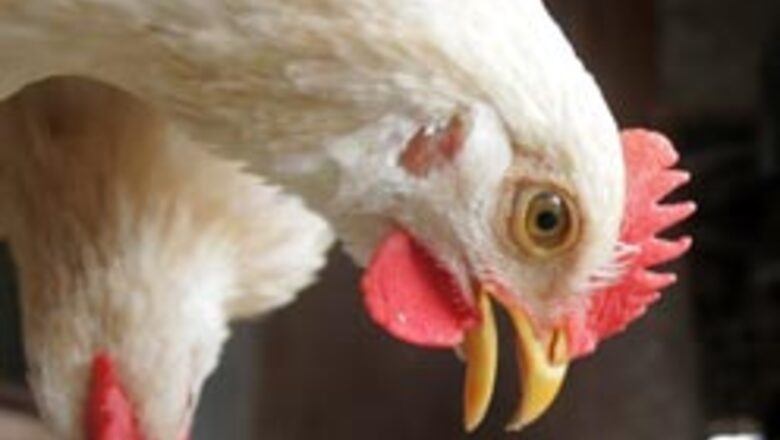
views
Hong Kong: Chinese scientists have identified a gene in the H5N1 bird flu virus which they say is responsible for its virulence in poultry, opening the way for new vaccines.
There are many different strains of H5N1, some of which kill more than half the people they infect, while others do little or no harm.
"We can now understand how this virus becomes lethal and the molecular basis for its pathogenicity," Bu Zhigao at the Harbin Veterinary Research Institute said.
The Chinese researchers zeroed in on the virulent gene after analyzing two closely related strains of the H5N1 obtained from infected geese in southern Guangdong province in 1996 - one highly pathogenic in chickens and the other harmless.
Differences between the two strains were located in four genes, they found.
The scientists designed four genetically modified viruses each containing one of the four genes in question and tested them on laboratory chickens.
Only chickens infected with the modified virus containing the highly pathogenic gene died. The other chickens had no signs of disease, the scientists wrote in the November issue of the Journal of Virology.
"Now that we know the special role of the (highly pathogenic) NS1 gene, we can think about developing a vaccine," Bu said, adding that a vaccine which neutralizes the gene known as NS1 could be quickly designed.
"Technically, that can happen very soon, but it is the tests and other procedures that will take a long time," the scientist added.
The scientists are from the Ministry of Agriculture's Animal Influenza Laboratory, the National Key Laboratory of Veterinary Biotechnology, Chinese Academy of Agricultural Sciences, and the Harbin Veterinary Research Institute.
H5N1 remains largely a disease in birds although it has killed over 150 people, mostly in Asia, since 2003. Experts fear that it can spark a pandemic and kill millions of people if it begins to transmit efficiently among humans.

















Comments
0 comment